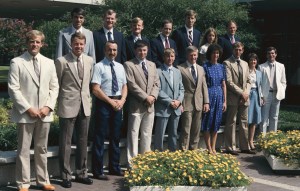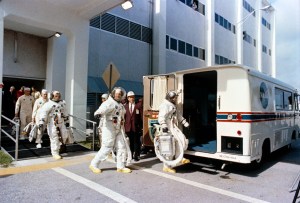From May 29 to July 17, 2009, for the first time in its history, each of the five partner agencies participating in the International Space Station Program had a crew member living and working aboard the orbiting facility at the same time. The period also marked the beginning of six-person crew habitation, greatly increasing the time available for utilization. The addition of the international partner elements and life support systems to enable the larger crew size made this 49-day event possible. Although international partner crew members routinely live and work aboard the station, its crew size now expanded to seven, having all the partners represented at the same time remains a unique event in the space station's history.
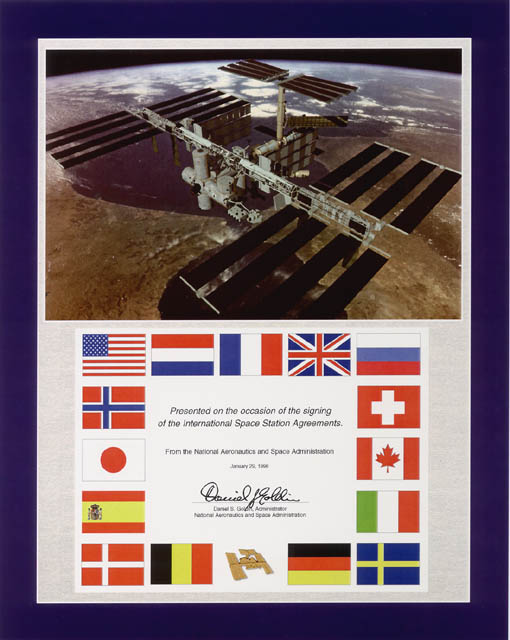
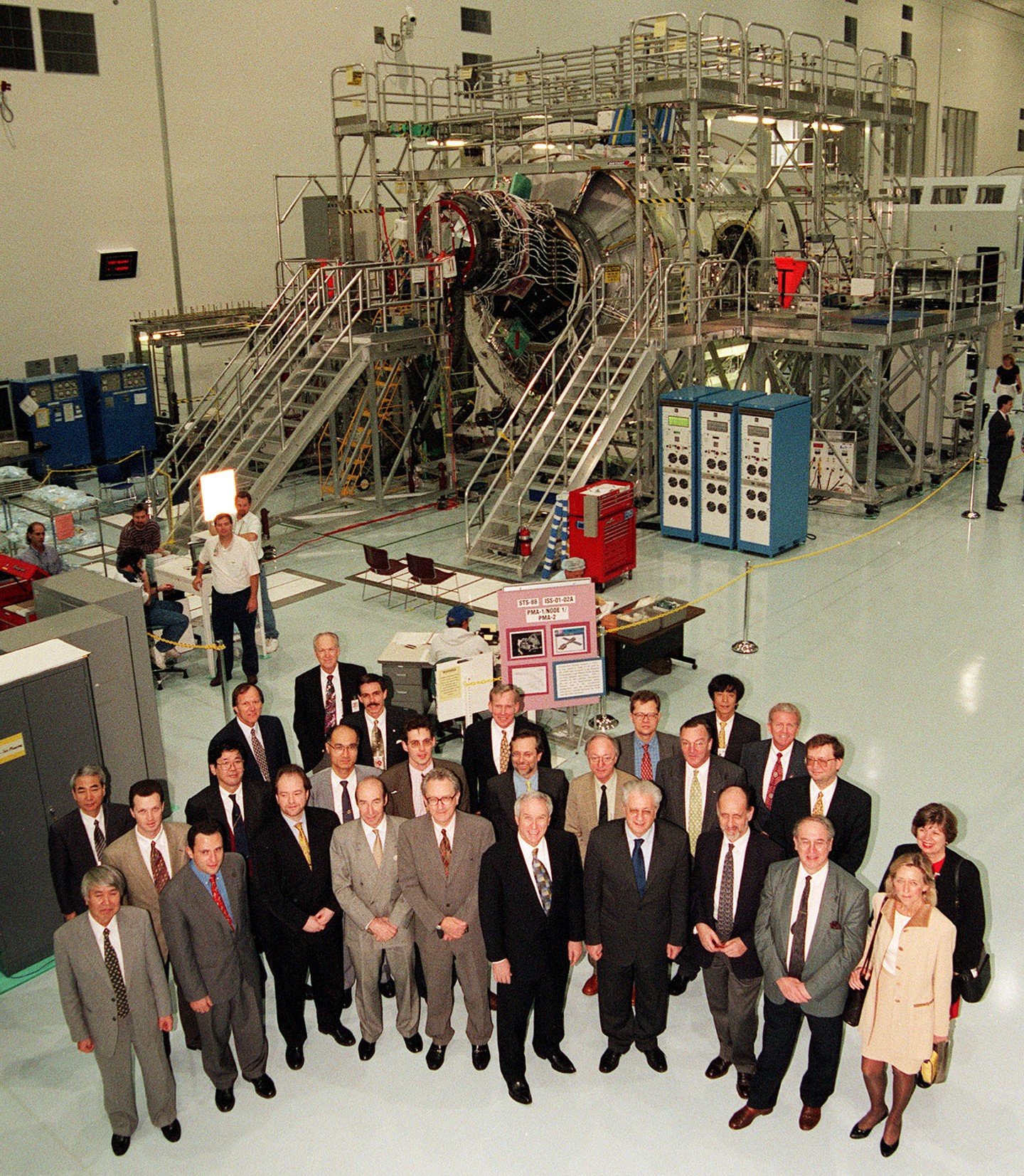
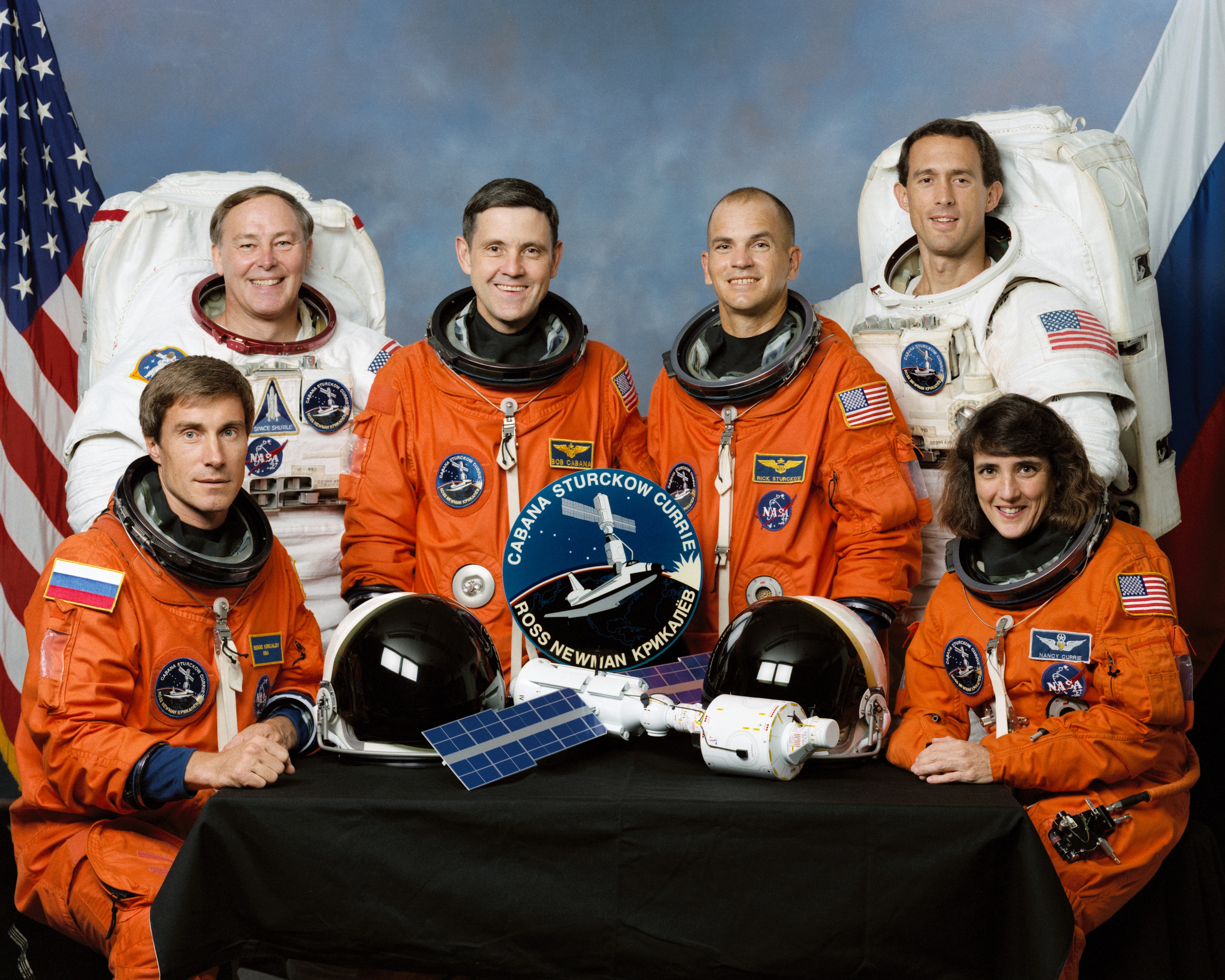
Left: Plaque commemorating the signing of the 1988 Inter-Governmental Agreement (IGA) governing the International Space Station partnership. Middle: Signatories of the 1998 IGA visit the Space Station Processing Facility at NASA's Kennedy Space Center in Florida, posing in front of the Unity Node 1 module being prepared for launch. Right: Joint NASA-Roscosmos crew of STS-88, the first space station assembly mission.
The International Space Station as we know it came into existence in 1993 with the merging of Space Station Freedom, a partnership among the United States, Canada, Japan, and the European Space Agency (ESA), with Russia's planned Mir-2 space station. In January 1998, representatives of these space agencies met at NASA's Kennedy Space Center in Florida and signed the Intergovernmental Agreement (IGA) that established the framework for use of the orbiting laboratory. The IGA stipulated the contributions of each agency to the program that entitled them commensurate utilization of the research facility as well as long-duration crew member flight opportunities, beginning when their elements had reached the station. Separate agreements covered the flights of International Partner astronauts on space shuttle assembly flights, usually to accompany elements from their agencies. In orbit construction of the space station began 11 months after the signing of the IGA. From the first assembly mission in December 1998 to March 2001, all components belonged to either NASA or Roscosmos, a fact reflected in the makeup of early space shuttle and expedition crews. The crew of the STS-88, the first space shuttle assembly mission, included five NASA astronauts and cosmonaut Sergei K. Krikalev representing Roscosmos.
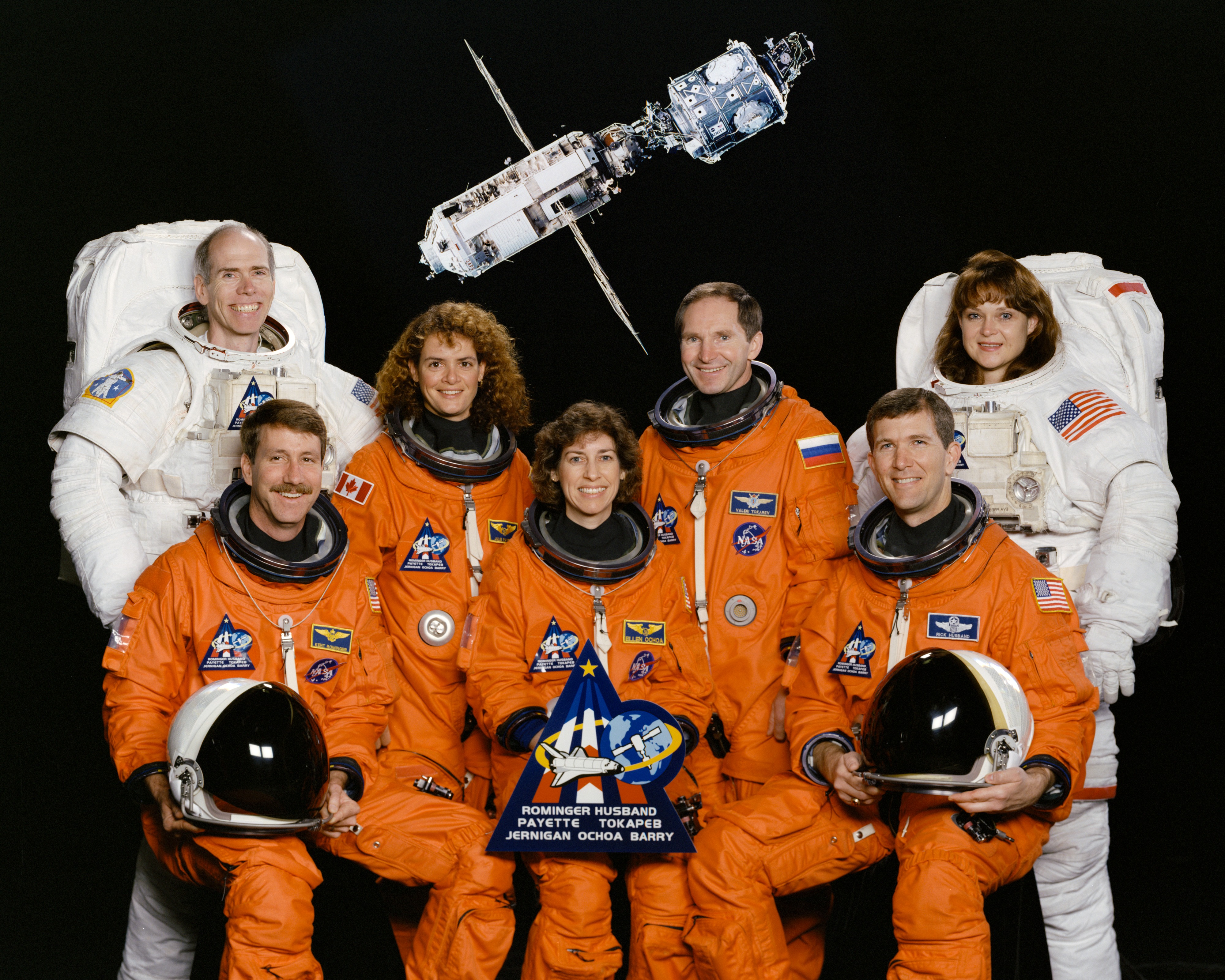


Left: STS-96 included Julie Payette, third from left, the first Canadian Space Agency astronaut to visit the space station. Middle: STS-92 included Koichi Wakata, right, the first astronaut from the Japan Aerospace Exploration Agency to visit the space station. Right: The joint NASA-Roscosmos space station Expedition 1 crew.
As early assembly continued, select space shuttle missions included International Partner crew members. The Canadian Space Agency's (CSA) first astronaut to visit the space station, Julie Payette, flew as one of the seven crew members on the second assembly flight, STS-96 in May-June 1999. The first astronaut from the Japan Aerospace Exploration Agency (JAXA) to visit the station, Koichi Wakata, flew on the fifth assembly flight, STS-92 in October 2000. When the Expedition 1 crew arrived to begin permanent habitation of the space station in November 2000, the crew consisted of NASA astronaut William M. Shepherd, and Roscosmos cosmonauts Krikalev and Yuri P. Gidenzko. The next six expeditions maintained the two-and-one crew composition, alternating between expeditions, until the impacts from the Columbia accident reduced crew size to two until Expedition 13. During this time, NASA and Roscosmos each had one crew member on board.
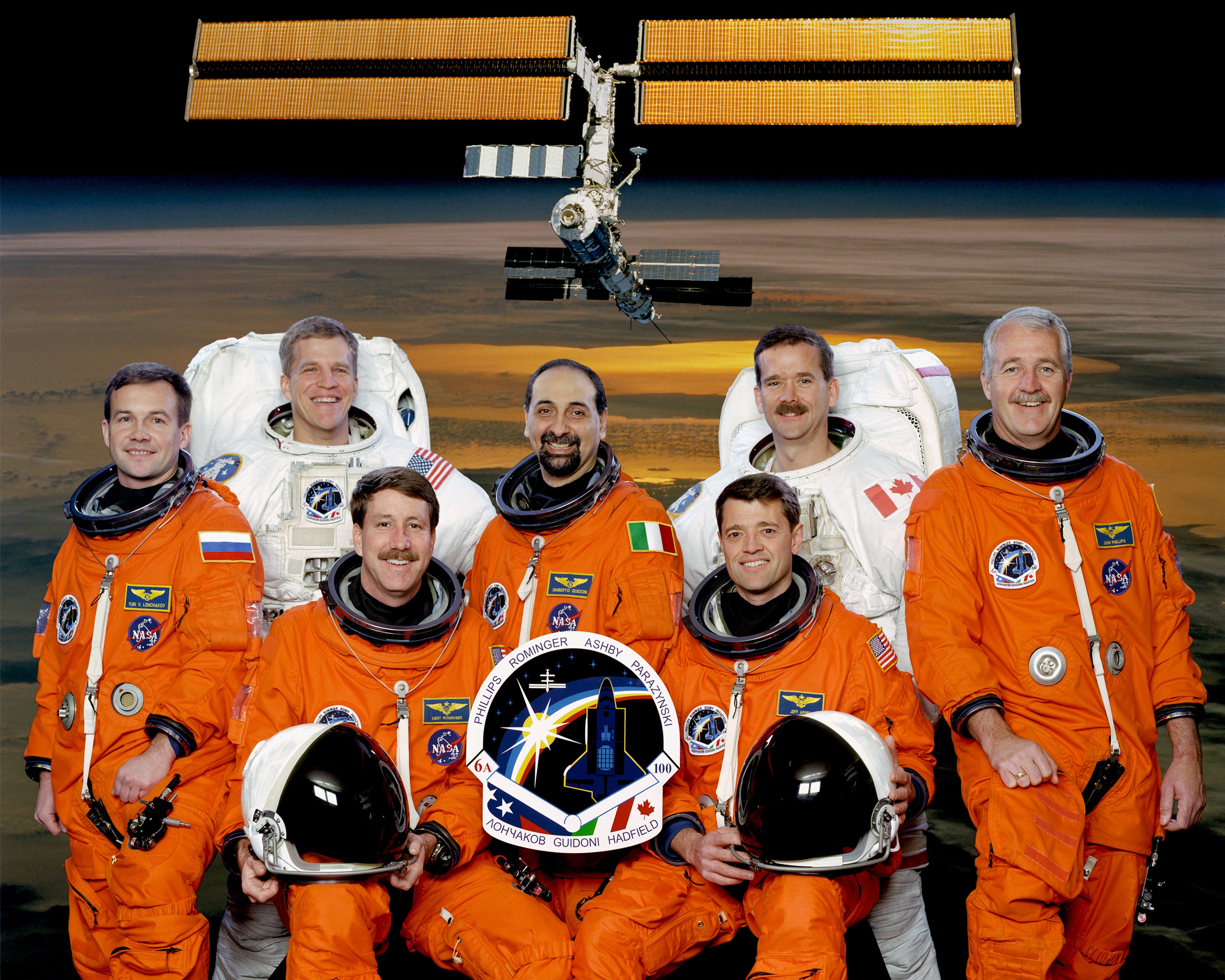
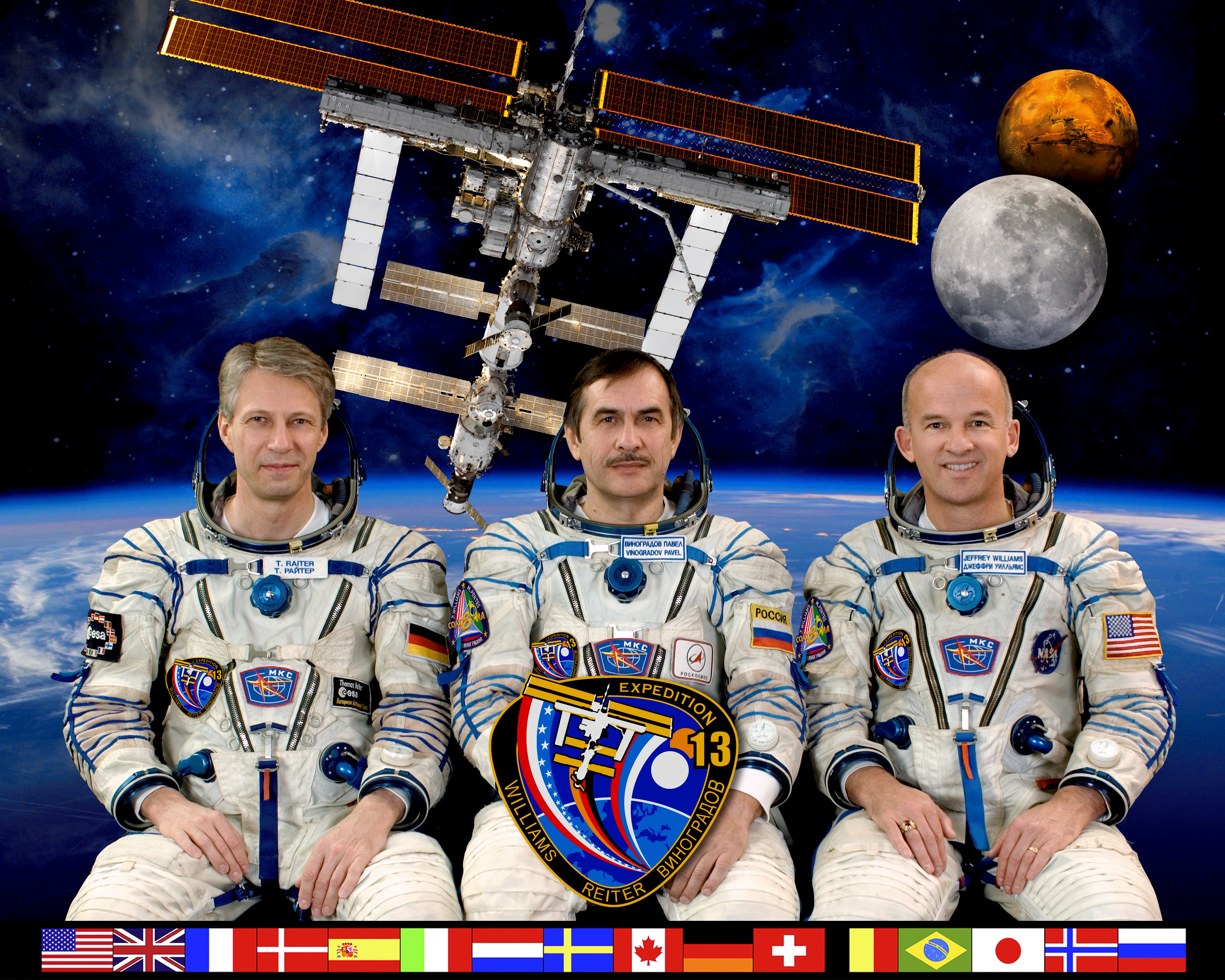

Left: STS-100 included Umberto Guidoni, center, the first European Space Agency (ESA) astronaut to visit the space station. Middle: Expedition 13 included Thomas A. Reiter, left, the first ESA astronaut to serve as a long-duration crew member on the space station. Right: STS-119 delivered Koichi Wakata, right, the first astronaut from the Japanese Aerospace Exploration Agency to serve as a long-duration crewmember on the space station.
The first ESA astronaut to visit the space station, Umberto Guidoni from Italy, served as a mission specialist on STS-100 in April 2001. The seven-member crew also included CSA's Christopher A. Hadfield, who accompanied and helped install the Canadian Space Station Remote Manipulator System, and Yuri V. Lonchakov from Roscosmos, making the STS-100 crew the most internationally diverse shuttle assembly crew. Thomas A. Reiter from Germany arrived at the station aboard STS-121 in July 2006, joining Expedition 13 as ESA's first long-duration resident crew member, and also returning the onboard crew size back to three. Wakata arrived at the station on STS-119 in March 2009 as JAXA's first long-duration crew member, joining Expedition 19's Lonchakov and E. Michael Fincke. Wakata's arrival set in motion the steps leading to the unique occasion of having each of the five partners with a crew member living and working aboard the space station at the same time.
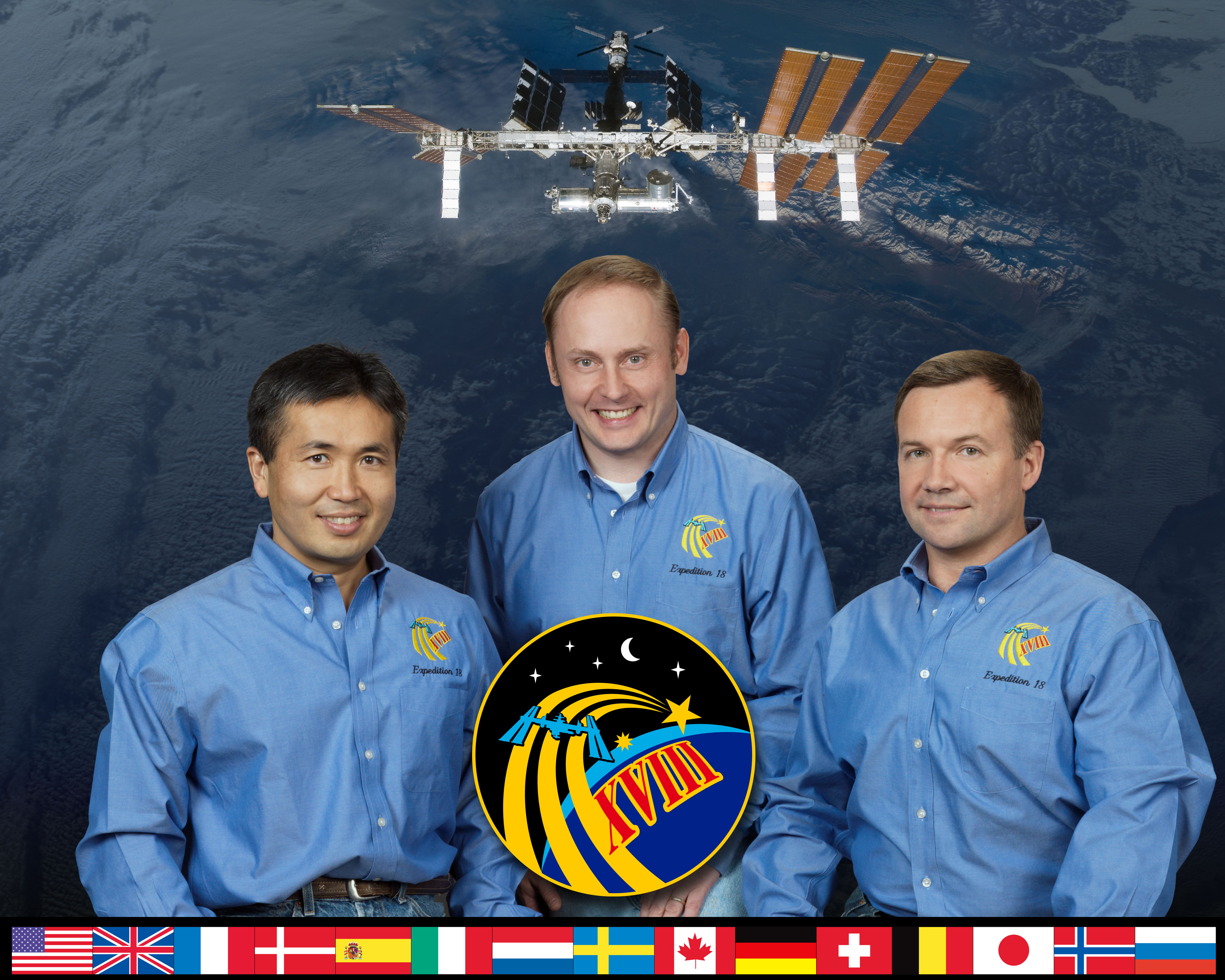
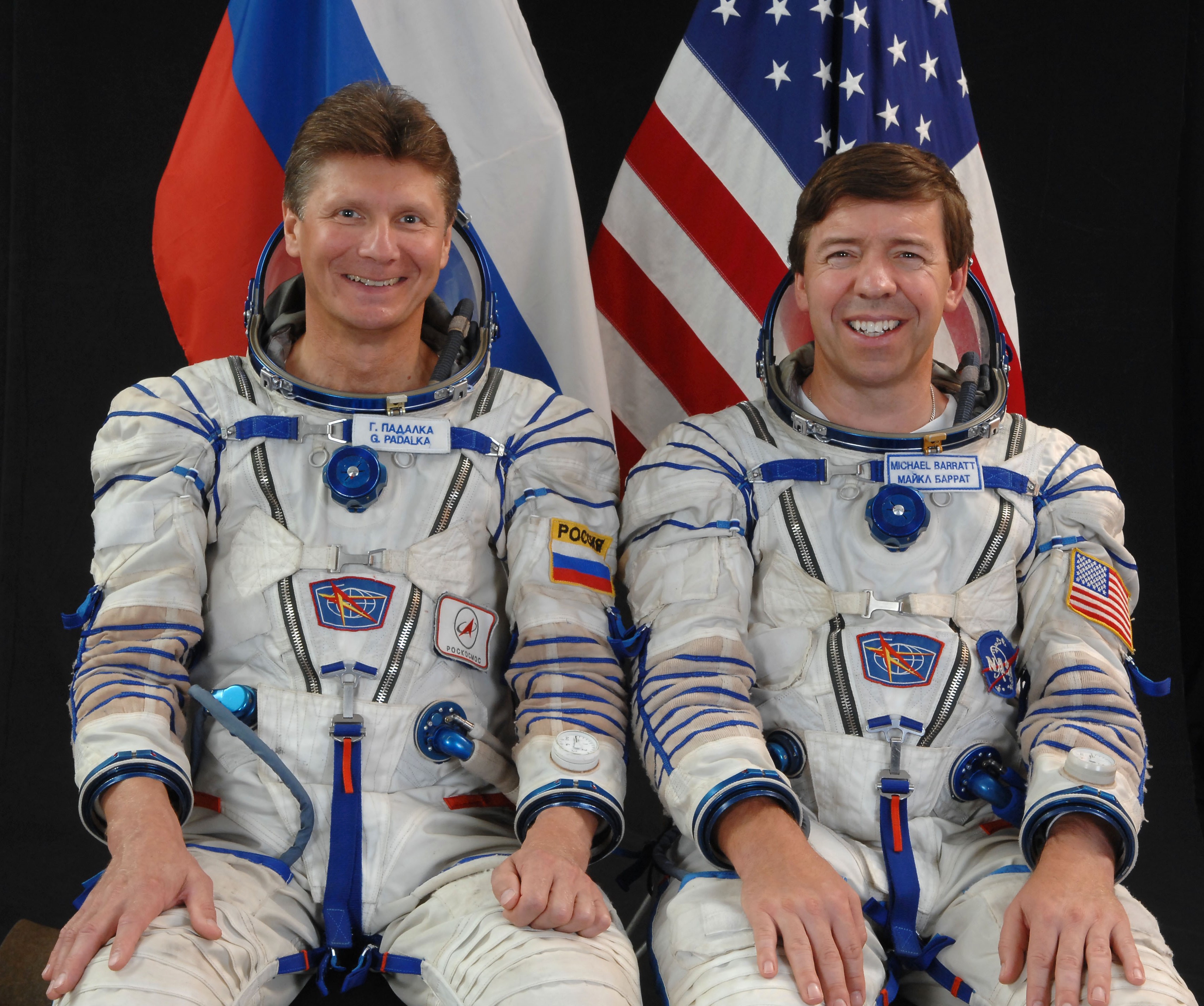
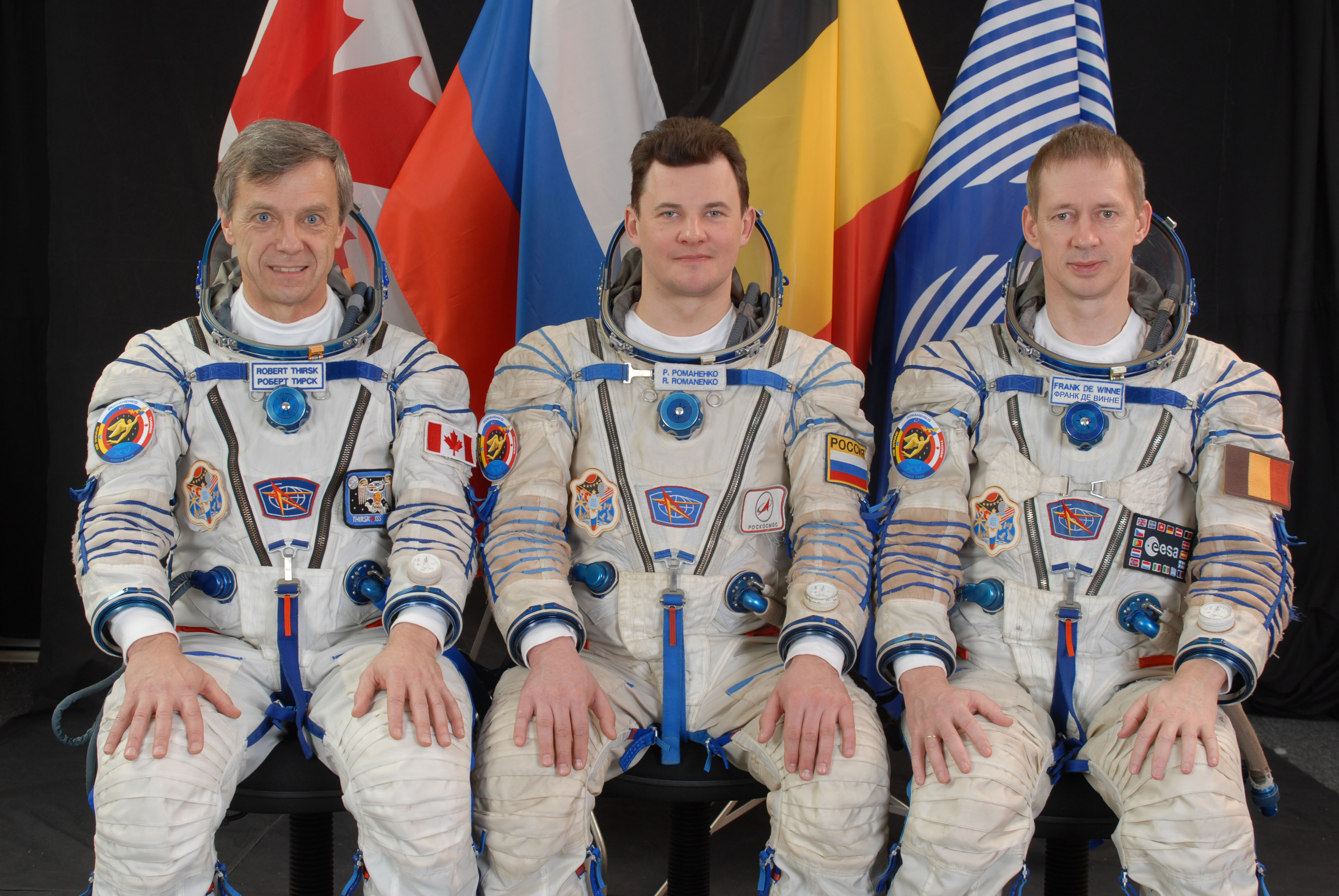
Left: Expedition 19 crew of Koichi Wakata of the Japan Aerospace Exploration Agency, left, NASA astronaut E. Michael Fincke, and Yuri V. Lonchakov of Roscosmos. Middle: Gennadi I. Padalka of Roscosmos, left, and NASA astronaut Michael M. Barratt of Expedition 19. Right: Canadian Space Agency astronaut Robert B. Thirsk, left, Roman Y. Romanenko of Roscosmos, and European Space Agency astronaut Frank L. DeWinne of Expedition 20.
Eleven days after Wakata's arrival, Soyuz TMA-14 delivered replacement Expedition 19 crew members NASA astronaut Michael M. Barratt and Gennadi I. Padalka of Roscosmos. On May 29, ESA's Frank L. DeWinne and CSA's Robert B. Thirsk, along with Roman Y. Romanenko of Roscosmos arrived aboard Soyuz TMA-15, and all five space station partners had representatives on board. Their arrival began Expedition 20 and the first period of six-person crew residency.

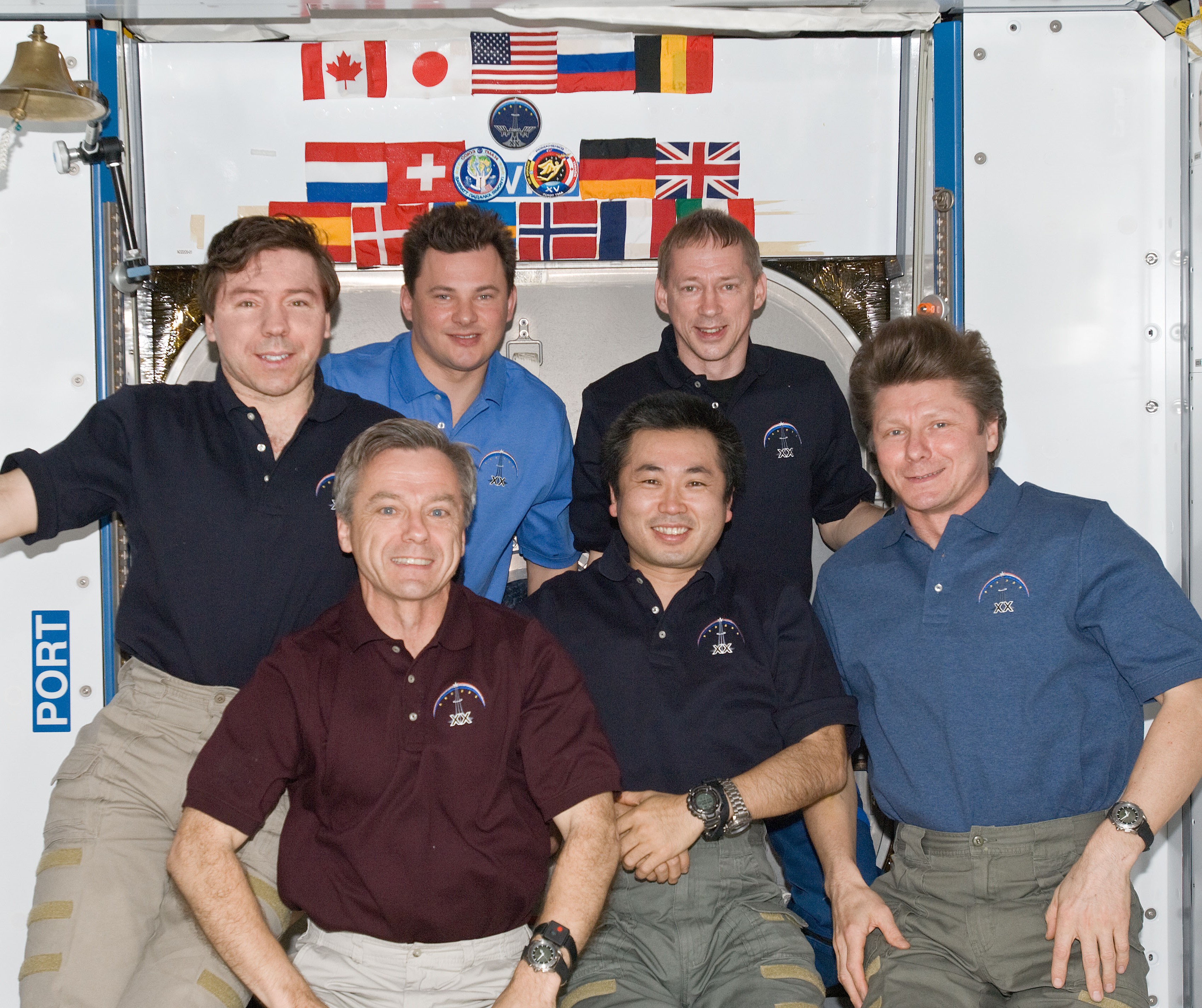

Left: Preflight crew photo of Expedition 20, the first six-person crew on the space station - Michael M. Barratt (NASA), Frank L. DeWinne (ESA), Robert B. Thirsk (CSA), Koichi Wakata (JAXA), Gennadi I. Padalka (Roscosmos), and Roman Y. Romanenko (Roscosmos). Middle: Inflight photo of the Expedition 20 crew. Right: The Expedition 20 crew members put their heads together.
The period of full international representation proved brief, however, lasting just 49 days, and remains unique to this day. Wakata broke up the party on July 17 when he exchanged places with NASA astronaut Timothy L. Kopra who arrived aboard STS-127. Barratt and Padalka left on Oct. 11, replaced by another NASA-Roscosmos crew. Finally, Romanenko, DeWinne, and Thirsk left on Dec. 1, replaced after a brief gap by a crew consisting of a NASA astronaut, a JAXA astronaut, and a representative of Roscosmos.

